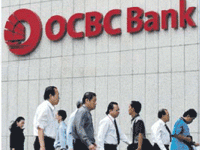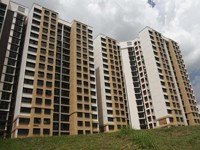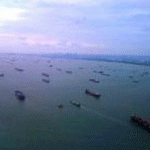In Focus
OCBC Bank's second quarter net profit down 26% from previous quarter
OCBC's net profit dropped to S$503 million, from S$676 million for the first quarter, with volatile financial markets resulting in a 35% decline in net trading income.
OCBC Bank's second quarter net profit down 26% from previous quarter
OCBC's net profit dropped to S$503 million, from S$676 million for the first quarter, with volatile financial markets resulting in a 35% decline in net trading income.
HDB launches BTO projects Senja Gateway and Corporation Tiara
The launch, which involves 1,016 units, pushed HDB’s total offering for the first seven months of 2010 to 9,844 new BTO flats.
HDB steps up enforcement against unauthorised subletting
59 flat owners are alleged to have violated the subletting rules.
Singapore's Q2 2010 job advertisement up 13.7%
The country experienced 30.7% increase in advertisements for merchandising and purchasing roles as employment sentiment remains positive.
Singapore companies make progress towards sound compensation
Yet there are still opportunities to further strengthen compensation practices behind increasing shareholder interest in executive compensation.
Shipping firms get that sinking feeling
Shipping firms must be getting used to that sinking feeling. But it seems that for freight rates at least the market has bottomed and prices have increased by 15% since August. Raymon Krishnan, the President of the Logistics & Supply Chain Management Society reckons that despite the increase in freight rates, carriers are cautiously optimistic about the recovery of the industry. “The downward spiral of freight prices has certainly stabilized, compared to the first quarter of this year. From a bottoming out of the market that happened June – July, we are now looking at carriers implementing General Rate Increases and Rate Restoration Programmes for freight and bunker.” Since August rates have increased by as much as 15% in most trade lanes and we can expect to see even higher increases as we enter 2010. This works out to be between US$150 – US$300 per twenty-foot equivalent unit (TEU). Carriers, just like everyone else nowadays, are being ‘cautiously optimistic’ as recovery is slow and there are no specific growth trends with the overall outlook in the industry matching what market experts predict i.e. we can expect things to return to pre 2009 performance in Q3 of 2010.” But contrary to popular belief, for some shipping companies it is business as usual.Krishnan reckons that regional carriers seem to be holding up pretty well. “The regional carriers like PIL and RCL seem to be holding up well as demand in the regional sectors are still quite strong. Also, carriers who have not invested in significant new builds like OOCL and Wan Hai are not as badly affected as some carriers, who in some circumstances have had to stop plying certain routes altogether.” Some analysts however believe that the sector is still hurting. OCBC’s investment research team is one who reckons that for shipping industry the outlook is still gloomy. “Supply side concerns remain high with continued deliveries of container ships, bulk carriers and tankers through the year adding to the glut. Repressed demand for container ships will move in sync with the sluggish global trade. While demand for bulk carriers may be buffered with the commodity gap in China, we think that a single country's fundamental demand appetite will not be able to prop up the whole subsector in any sustained manner. Crude tankers








 Advertise
Advertise





















Commentary
AI is revolutionising learning: Why should educational institutions in Singapore embrace this change?
Seeking an office space in Singapore: Where do you start?